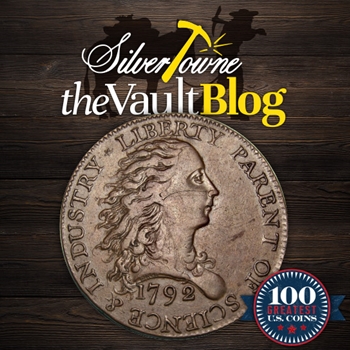
Early United States coinage is a popular avenue of collecting for obvious reasons. Not only does it tie us to the creation of our country, but the close and sometimes direct involvement of those founding fathers and significant historical figures that only our textbooks have taught us about. The phrase “history in your hands” gets thrown around a lot in the numismatic hobby, but that is exactly what these coins are. The next entry in our blog series covering Whitman Publishing’s fourth edition of the 100 Greatest United States Coins relays that exact sentiment, proving why early coinage is so popular. With guidance from Jeff Garrett, along with help from Ron Guth, we will explore this top 25 pick that is as early as early gets when it comes to United States coinage.
#25 – 1792 Birch Cent
Everything began to happen in 1792, including the United States’ opening of its first official mint. Among the many first tasks to prepare for the mint's establishment was preparing dies for coins. One of the artists to help in doing so was Robert Birch who engraved dies for a large cent piece to be made of pure copper. Early versions of the design showed Liberty with a smaller hairstyle of curly hair in the addition of the back of the coin showcasing the legend G.W. P.T., which stood for George Washington---President. The legend was visible on the original where the 1/100 fraction and a smaller bow is seen on the final version of the pattern coin. According to Garrett, this change on the Birch design was because Washington refused to have his image or any reference to him placed on a coin.
United States Mint records show that on September 11, 1792, a small purchase of copper was made. Coincidentally enough, it was approximately the same amount it would take to make between 100 and 200 Birch cents. Due to the known rarity of the coin today, this would make sense. There are versions featuring the plain or lettered edges. The obverse of the Birch cent is also like the 1792 half disme, deducing that Birch may have designed that coin as well.
There are three types of 1792 pattern cents, including the silver center cent, fusible alloy cent, and the Birch cent. The Birch cent matches the standards most outlined in the Coinage Act of 1792, bringing forth the notion that the first official United States cent coin is the Birch cent. They were struck at the Mint on Mint equipment by Mint employees. They were also produced according to the standards outlined by the government. This all occurred before the recorded first cents of 1793.
With only 12 or 13 known examples thought to exist today of the 1792 Birch cent, it is imperative to know that there are counterfeits, or electrotype copies, out there. Electrotypes are high quality duplicates that are made one by one that require the use of a genuine coin. The electrotype coin is made of two thin copper shells linked together and filled with a lead core. A key way to tell the difference between an electrotype and a real coin is the sound they make when tapped with a pencil. A genuine coin will make a high-pitched ringing noise while the electrotype will make a dull sound. The edge will also be key in telling the difference with a seam appearing where the obverse and reverse join. Believe it or not, electrotypes have developed a following over the years despite their deceptive value.
In 1960, the historical market value for the 1792 Birch cent in a Very Fine condition was $1,500. By this fourth edition (2015), that same coin is valued at $500,000.







